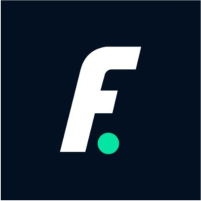Latest News
- $FLOW AI agents are making profit and today two major updates: the ability for agents to short-sell and perps. So get in
- Virtual Reality Platform Decentraland Outpaces All Other NFT Projects in Terms of Recent Development: Santiment
- Virtual Reality Platform Decentraland Continues To Lead Santiment’s Rankings of Top NFT Projects by Development
- Which Altcoins to Get Into Right Now? Today December 5th
Current Price
The current price of FLOW is $0.37082
Introduction
The Flow (FLOW) blockchain platform represents a significant advancement in the domain of decentralized applications, particularly in the gaming and NFT sectors.
With its unique multi-layered architecture designed to optimize scalability and user experience, it positions itself as a formidable contender in the blockchain space.
As we explore its distinctive features, applications, and the broader ecosystem it inhabits, the implications of Flow’s strategic partnerships and economic model will become increasingly pertinent.
What remains to be seen is how these elements will converge to shape its future trajectory.
Quick Overview
- Flow’s multi-layered architecture enhances performance by separating consensus, execution, and storage, enabling high transaction throughput and scalability.
- The FLOW token facilitates transactions, staking, and governance, incentivizing ecosystem growth and developer engagement.
- Flow excels in gaming and NFTs, providing a user-friendly platform for creating and trading digital assets with proven ownership.
- Cross-chain interoperability allows seamless asset transfer between different blockchains, expanding Flow’s utility in diverse applications.
- Recent developments focus on improving transaction speeds and costs, positioning Flow for significant market impact in the blockchain ecosystem.

Overview of Flow Crypto
Flow (FLOW) is an innovative blockchain platform designed specifically for the needs of decentralized applications (dApps) and digital assets, particularly in the domain of gaming and NFTs. Developed by Dapper Labs, the creators of CryptoKitties, Flow addresses the limitations of traditional blockchain systems, such as scalability and user experience, making it uniquely suited for high-demand applications.
The architecture of Flow allows for efficient processing of transactions without compromising security. Its multi-node architecture segregates roles among various nodes, enhancing performance while enabling a more decentralized system. This design allows developers to build scalable applications that can handle millions of users without the bottlenecks often seen in other blockchains.
In addition, Flow emphasizes user accessibility and developer-friendly tools, which are critical for mass adoption. Through its unique resource-oriented programming model, developers can create complex interactions with digital assets while ensuring safety and reliability.
Likewise, Flow’s native token, FLOW, plays an essential role in the ecosystem, facilitating transactions, staking, and governance.
Unique Architecture Features
Flow’s architecture is distinguished by its remarkable scalability and performance, enabling it to handle a high volume of transactions efficiently.
Additionally, its design promotes seamless interoperability with other blockchain networks, enhancing its utility and integration within the broader decentralized ecosystem.
These features collectively position Flow as a forward-thinking solution tailored for the evolving demands of digital applications.
Scalability and Performance
At the core of Flow’s architecture lies a unique approach to scalability and performance that distinguishes it from traditional blockchain frameworks. Unlike many blockchains that rely on a single layer for processing transactions, Flow employs a multi-layered architecture that separates the responsibilities of consensus, execution, and storage. This specialized design enables parallel processing of transactions, considerably enhancing throughput while maintaining decentralization.
Flow’s use of a resource-oriented programming model further optimizes performance by allowing developers to create smart contracts that are efficient in resource usage. This model minimizes the computational overhead typically associated with executing complex transactions on other platforms.
Additionally, the implementation of “Cadence,” Flow’s resource-oriented programming language, guarantees that developers can write safer and more efficient code, reducing the likelihood of bugs that may compromise performance.
Moreover, Flow’s consensus mechanism is designed for high throughput, capable of processing thousands of transactions per second without sacrificing security. This ability to scale dynamically in response to demand positions Flow as a viable solution for applications requiring high-performance capabilities, such as gaming and digital collectibles.
Interoperability With Other Chains
The architecture of Flow not only enhances scalability and performance but also facilitates interoperability with other blockchain networks. This is achieved through its unique multi-layer design, which separates consensus, computation, and storage layers. Such compartmentalization allows Flow to interact seamlessly with external protocols and chains, thereby promoting a more interconnected ecosystem.
One of the standout features of Flow’s interoperability is its ability to support smart contracts that can communicate across different blockchains. By leveraging standardized communication protocols, Flow enables decentralized applications (dApps) to access assets and data from other networks without sacrificing security or efficiency. This is particularly beneficial for developers looking to create cross-chain applications, as it expands the potential user base and utility of their projects.
Moreover, Flow’s emphasis on developer-friendly tools and resources further enhances its ability to integrate with other ecosystems. The use of Cadence, a resource-oriented programming language, simplifies the development of smart contracts that can operate across diverse blockchain environments.

Scalability Solutions
Scalability is a critical consideration for Flow (FLOW) as it aims to accommodate growing user demand and transaction volumes.
Layer 2 solutions present a promising avenue for enhancing throughput and efficiency, while cross-chain interoperability can facilitate seamless interactions across different blockchain networks.
Together, these approaches not only bolster Flow’s performance but also position it favorably within the broader blockchain ecosystem.
Layer 2 Solutions
Numerous Layer 2 solutions have emerged as critical components in enhancing blockchain scalability, addressing the limitations of transaction throughput and speed inherent in many Layer 1 networks.
These solutions aim to alleviate congestion and improve user experience by offloading transactions from the main chain.
Three notable Layer 2 approaches include:
- State Channels: These enable participants to conduct off-chain transactions, only settling final states on the blockchain, thereby reducing the load on the main network.
- Rollups: By bundling multiple transactions into a single one, rollups greatly increase throughput while maintaining the security of the Layer 1 blockchain.
- Plasma: This framework allows the creation of child chains that can process transactions independently, which are later settled back to the main chain, enhancing scalability without compromising on security.
Each of these solutions offers distinct advantages and trade-offs, catering to various use cases.
As the blockchain ecosystem continues to evolve, the integration of Layer 2 solutions will play a pivotal role in ensuring that decentralized applications can operate efficiently, paving the way for broader adoption and innovation within the space.
Cross-Chain Interoperability
Cross-chain interoperability has emerged as a vital consideration in the quest for scalable blockchain solutions, enabling disparate networks to communicate and share information seamlessly. This capability is essential as the number of blockchain platforms proliferates, each with unique functionalities and ecosystems.
Flow, with its focus on enabling high-performance applications, recognizes that effective interoperability can greatly enhance user experience and expand the utility of its network.
The implementation of cross-chain protocols facilitates the transfer of assets and data across different blockchains, mitigating the silo effect that often inhibits scalability. By allowing for interactions with other networks, Flow can leverage external liquidity, tap into diverse user bases, and support a broader array of decentralized applications. This is particularly beneficial in areas such as gaming and NFTs, where assets often span multiple platforms.
Moreover, the establishment of robust cross-chain bridges can enhance security and reduce transaction costs, making it more efficient for users to engage with multiple ecosystems.
As Flow continues to evolve, its success will increasingly depend on its ability to integrate with other blockchains, thereby not only enhancing its scalability but also solidifying its position within the broader blockchain landscape.
Use Cases and Applications
Flow (FLOW) presents a diverse array of use cases and applications that underscore its versatility within the blockchain ecosystem.
Primarily designed to cater to the growing demand for scalable and user-friendly decentralized applications, Flow excels in various domains. Its architecture allows for seamless interactions and innovative solutions, making it an attractive option for developers and enterprises alike.
Key use cases include:
- Gaming: Flow is prominently utilized for the development of blockchain-based games, where it facilitates the creation and trading of unique in-game assets, enhancing user engagement and fostering community-driven ecosystems.
- Non-Fungible Tokens (NFTs): The platform is a pioneer in the NFT space, enabling artists and creators to mint and sell digital collectibles with ease, while ensuring provenance and ownership through smart contracts.
- Decentralized Finance (DeFi): Flow supports various DeFi applications that promote financial inclusivity, allowing users to lend, borrow, and trade assets in a secure and efficient manner.
These applications highlight Flow’s commitment to fostering innovation and enhancing user experiences within the blockchain landscape, positioning it as a formidable player in the industry.

Comparison With Other Blockchains
When evaluating Flow in relation to other blockchain platforms, it becomes evident that its unique architecture and design choices set it apart in a competitive landscape. Unlike Ethereum, which relies on a Proof of Work mechanism, Flow employs a multi-role architecture that separates consensus and execution processes. This design enhances scalability, allowing Flow to handle high volumes of transactions without compromising speed or performance.
In comparison to Bitcoin, which primarily serves as a digital currency, Flow focuses on enabling complex smart contracts and decentralized applications, particularly in the domain of NFTs and gaming. Its ability to support high throughput and low transaction costs positions it favorably against competitors like Binance Smart Chain and Solana, which also emphasize scalability but may encounter issues related to decentralization.
Furthermore, Flow’s developer-friendly tools and support for various programming languages cater to a broader audience, potentially attracting more developers than platforms with steeper learning curves.
Flow’s Ecosystem and Partnerships
The vibrant ecosystem surrounding Flow is a demonstration of its strategic partnerships and collaborative initiatives, which greatly enhance its value proposition within the blockchain space.
These partnerships not only bolster Flow’s technological infrastructure but also expand its reach into various industries, fostering innovation and user engagement.
Key elements of Flow’s ecosystem include:
- Gaming Partnerships: Collaborations with leading gaming companies such as Dapper Labs, which has developed popular titles like NBA Top Shot, showcase Flow’s capacity to create engaging user experiences and drive mainstream adoption.
- Entertainment Collaborations: Strategic alliances with entertainment giants enable Flow to integrate digital collectibles and NFTs into popular media, enhancing user interaction and creating new revenue streams.
- Developer Community: A robust network of developers is encouraged through tools and resources, ensuring that Flow remains at the forefront of blockchain innovation and application development.
Together, these components create a dynamic ecosystem where creativity and technology intersect, positioning Flow as a pivotal player in the blockchain landscape and fostering a sustainable model for growth and scalability.
Economic Model and Tokenomics
A well-structured economic model and robust tokenomics are essential for the sustainability and growth of any blockchain project, and Flow is no exception. Flow employs a unique economic framework that focuses on scalability, usability, and incentivization. At its core, Flow’s token, FLOW, serves multiple purposes: it acts as a medium of exchange, a staking asset, and a governance token, thereby creating a multi-faceted utility that enhances user engagement.
The tokenomics of FLOW is designed to align the interests of developers, users, and investors. A portion of the transaction fees collected is allocated to ecosystem growth, incentivizing developers to build on the platform. Additionally, FLOW tokens can be staked to earn rewards, which encourages long-term holding and reduces market volatility.
Furthermore, Flow employs a unique approach to scalability through its architecture, which separates consensus from computation and storage. This not only increases efficiency but also allows for lower transaction costs, making it more accessible for users.
Recent Developments and Roadmap
Flow has made important strides recently, reflecting its commitment to innovation and ecosystem growth. The development team has focused on enhancing user experience and expanding partnerships, which are essential in the competitive landscape of blockchain technology.
Key recent developments include:
- Protocol Enhancements: Upgrades to Flow’s consensus mechanism have improved transaction speeds and reduced costs, making it more attractive for developers and users alike.
- Strategic Collaborations: Flow has entered into partnerships with major brands and platforms, greatly increasing its visibility and adoption. Collaborations with companies in gaming and NFTs are particularly significant, as they tap into popular trends.
- Developer Initiatives: A series of hackathons and grants have been launched to encourage developers to create on the Flow blockchain. This initiative not only fosters innovation but also builds a vibrant community around the ecosystem.
These advancements are not merely incremental; they represent a strategic alignment with market demands and user expectations.
The roadmap ahead appears promising, as Flow continues to position itself as a leader in the blockchain space, prioritizing scalability and user engagement.
Future Potential and Market Outlook
With a robust foundation established through recent advancements, Flow is well-positioned to capitalize on emerging trends within the blockchain sector. The platform’s unique architecture, designed specifically for scalability and usability, allows developers to build applications that can attract larger audiences without compromising performance. This positions Flow favorably as decentralized applications (dApps) continue to gain traction.
The growing demand for non-fungible tokens (NFTs) and gaming applications further enhances Flow’s future potential. As major brands and creators leverage blockchain technology for digital ownership and interactive experiences, Flow’s user-friendly environment is an attractive proposition for both developers and users alike.
Partnerships with established entities in the entertainment and sports industries, such as NBA Top Shot, not only validate its value proposition but also provide a steady influx of users and usage.
Market sentiment surrounding blockchain technology remains optimistic, bolstered by institutional interest and regulatory clarity. As Flow continues to innovate, its ability to adapt to changing market dynamics will be essential.
The combination of a strong technical framework, strategic partnerships, and an expanding ecosystem positions Flow as a significant player in the blockchain landscape, suggesting a promising outlook for long-term growth.
Frequently Asked Questions
How Can I Buy Flow (Flow) Tokens?
To purchase Flow tokens, you must first select a cryptocurrency exchange that lists them, create an account, complete any necessary verification, deposit funds, and then execute a buy order for the desired quantity of tokens.
What Wallets Support Flow (Flow) Storage?
Several wallets support FLOW token storage, including the official Flow Wallet, Ledger hardware wallets, and various software wallets like Blocto and Gnosis Safe. Each option offers unique features, ensuring security and accessibility for users.
Is Flow (Flow) Suitable for Beginners?
Flow offers an accessible entry point for beginners due to its user-friendly interface and extensive documentation. Its focus on scalability and developer support further enhances its suitability, fostering a conducive environment for newcomers to blockchain technology.
What Are the Security Measures for Flow (Flow)?
The security measures for Flow include advanced cryptographic techniques, decentralized governance, regular audits, and compliance with industry standards. These protocols guarantee data integrity, protect against unauthorized access, and foster user trust in the ecosystem.
How Can I Stay Updated on Flow (Flow) News?
To stay informed about Flow news, regularly monitor reputable financial news websites, subscribe to industry newsletters, follow relevant social media channels, and participate in online forums for real-time insights and community discussions regarding market developments.
Wrapping Up
In conclusion, Flow (FLOW) demonstrates significant potential as a blockchain platform specifically designed for decentralized applications in gaming and NFTs.
Its innovative multi-layered architecture facilitates scalability and enhances user experience, while its commitment to cross-chain interoperability positions it favorably against competitors.
With a strong ecosystem and strategic partnerships, Flow is poised for continued growth.
The economic model and recent developments further support its promising outlook, suggesting that Flow may play a vital role in the future of blockchain technology.
